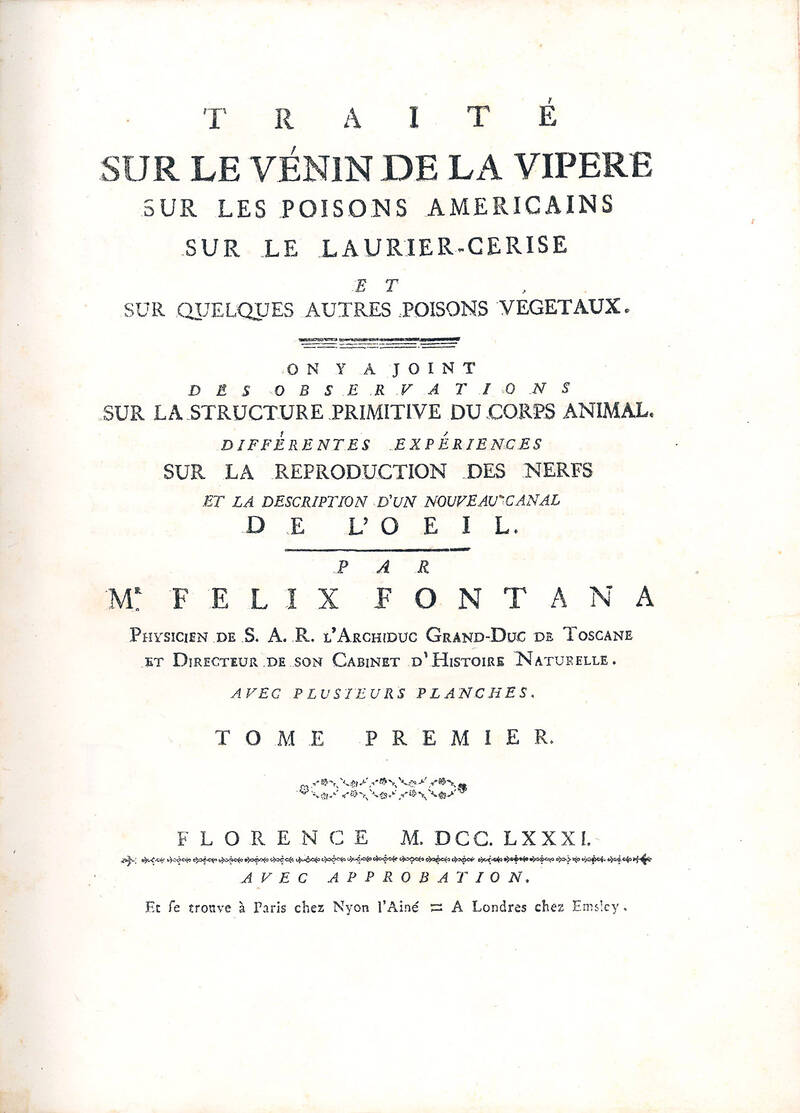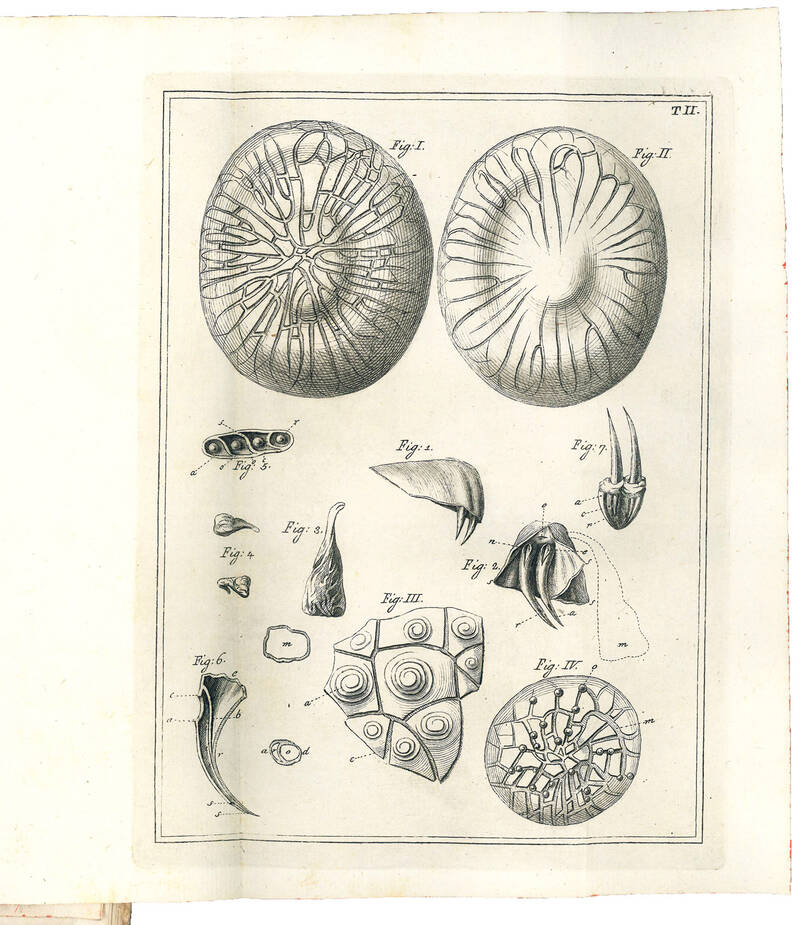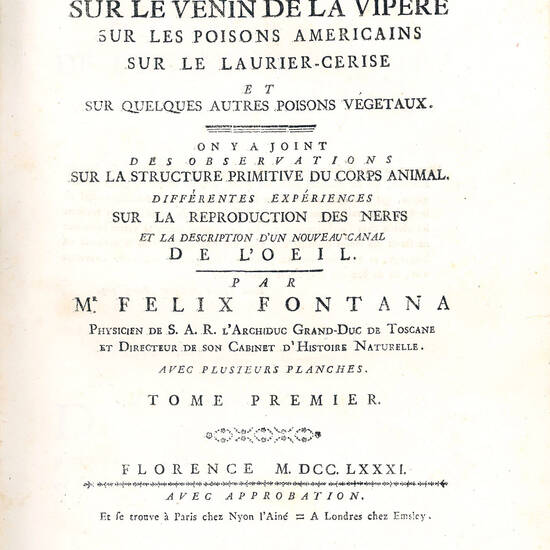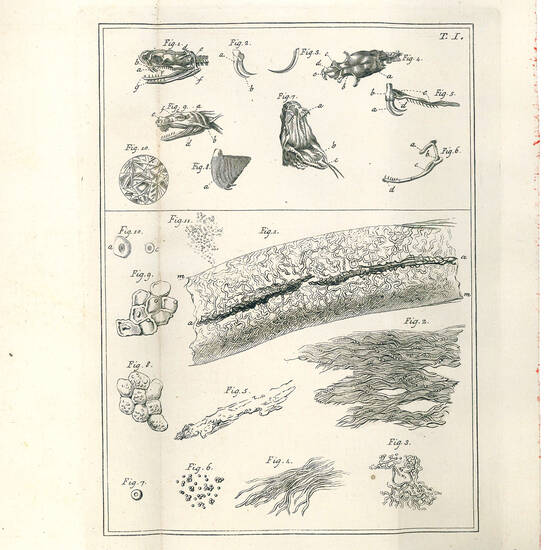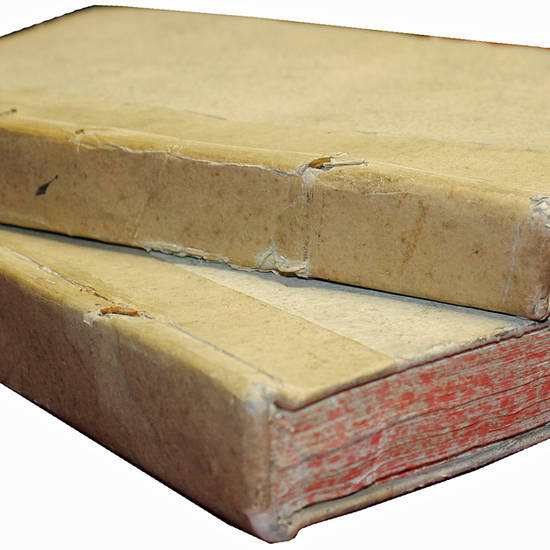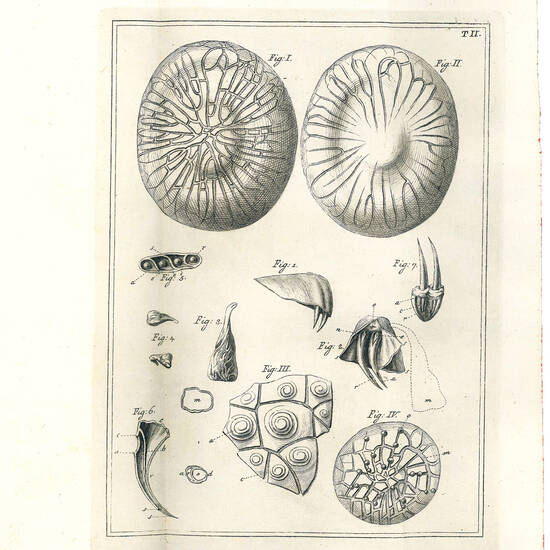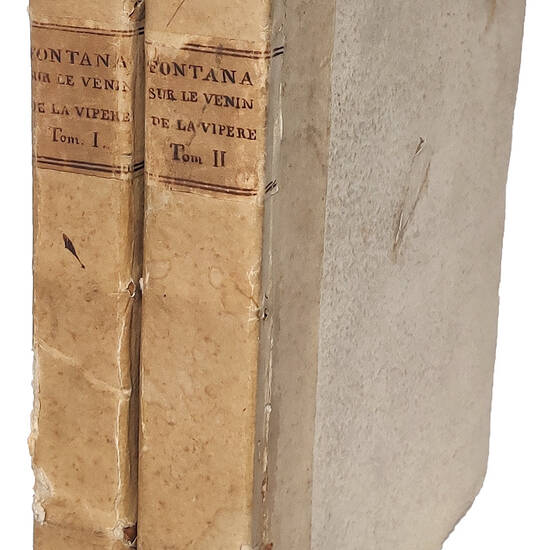A MILESTONE IN HERPETOLOGY AND TOXICOLOGY
Two volumes, small folio (275x200 mmm). [2], XXVIII, [2 blank], 329, [1] pp.; XI, [1], 373, [1] pp. and X folding engraved plates. Contemporary paperboards, lettering piece on spine, red marbled edges. Volume two a bit loose at the ned. A fine, large-paper copy.
Revised and much enlarged second edition (the first was published in Italian in 1767). “The quality of Fontana's scientific accomplishment is evident from his first work, on irritability and sensitivity, a subject that he continued to pursue so intensely as to earn the praise of Haller in 1767, [...] The research on the movement of the Iris (1765) and on viper venom (1767, 1781) is strictly tied to irritability [...] After a series of impressive and ingenious experiments, Fontana retracted the action of the bite of the viper to an alteration in the irritability of the fibers which he maintained was mediated by the blood: in other words, the viper's poison directly alters the blood, coagulating it, and this in turn alters all parts of the organism - especially nerve fibers - that the blood would normally nourish. Fontana extended his toxicological experiments to other substances, especially to curare. Fontana also took advantage of microscopic investigations ...[and he] belongs, together with Spallanzani, among the major microscopists of the 18th century. [...]” (D.S.B., V, pp. 55-57).
“The starting point of modern investigations of serpent venoms. This work also includes Fontana's description of the ciliary canal in the eye of an ox [...] The greatly expanded French translation, 2 vols. 1781, includes Fontana's work on the anatomy of the nerves and nerve regeneration” (G&M, 2103).
“Fontana's Treatise on the nerves is a little goldmine of ideas, for his time, on the frontier of this science. Not only did he describe and illustrate the solid axis ‘cylinder'of the ‘primitive nerve fiber', but also the degeneration of nerve, as it loses its fucntion when separated from its center. Vol. 2 discusses American poisons” (Haymaker, p. 205).
“He was the first to use chemical fixatives to preserve retinal tissue for examination. He found neural and supporting elements in the retina and described retina vessels” (Gorin, 60).
“The Italian abbot, Fontana, was a distinguished naturalist and physiologist whose original and important researches on serpent venoms were published in Italian in 1767. In 1781 Fontana revised and enlarged his original treatise and added other essays, publishing the entire work in French [... It] includes his letter in which he gives an account of his investigation of the space at the angle of the iris known as Fontana's space or canal” (Heirs of Hippocrates, 628: English translation in 2 vols, after the French 1781 edition).
Felice Fontana, a native of Pomarolo in Trentino, studied in Rovereto under Girolamo Tartarotti, then mathematics in Parma under Belgrado and anatomy and physiology in Padua with G.B. Morgagni. Between 1755 and 1757 he was in Bologna, where he conducted various researches in experimental physiology together with L.M.A. Caldani. In 1765 he became professor of logic at the University of Pisa. The following year he was appointed court physicist by the Grand Duke of Tuscany Pietro Leopoldo. At the latter's behest he founded the Museum of Physics and Natural History in Florence. In 1775 he set out on a five-year journey that took him to all the major European cities, where he got to know all the leading scientists of the time and published several memoirs and dissertations. He devoted the last years of his life to his museum and in particular to the anatomical waxes, made with the help of P. Mascagni, which shortly before his death were taken to France by Napoleon's troops. However, this did not prevent him from joining the republican cause. He died in Florence in 1805 (C. Adami, Di Felice e Gregorio Fontana, Rovereto, 1905, pp. VII-XIX).
Hirsch, II, 562; Weil cat. 26, 179 (“First French edition and first editions of the important additional tracts”); Ferchl, 159; Wellcome, III, 37; Cole, 1836; Sabin, 24988.
[4593]

